If you were to ask me which device has left a deep impression on me during my time with the iPhone, it would undoubtedly be the iPhone 5s.
For both Apple and users, the iPhone 5s is a product of epoch-making significance.
Its release marked the true entry of the iPhone into the 4G era, the introduction of Touch ID for unlocking, a shift to a flat design in UI, and most importantly, the A7 processor, which ushered in the era of 64-bit architecture for mobile applications.
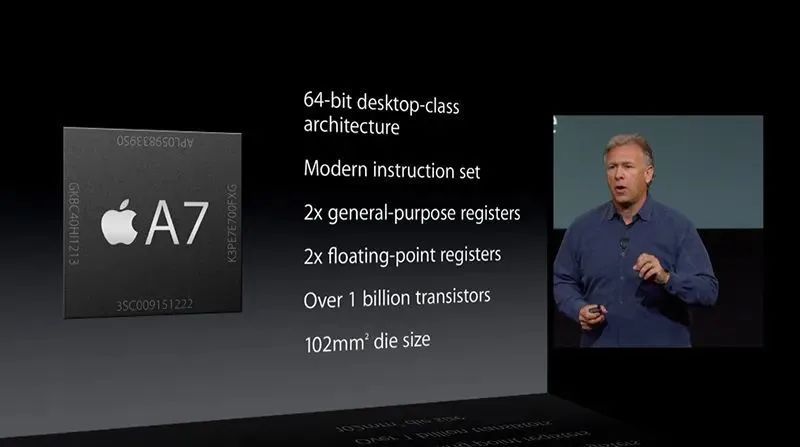 At a time when mobile phones had only 3GB of RAM, the 64-bit architecture seemed like a gimmick, especially since the iPhone 5s only had 1GB of RAM…However, since then, the rapid development of the mobile industry has led to technological iterations, and gradually, the Android camp has also begun to abandon 16 and 32-bit architectures in favor of 64-bit.This has become a trend.However, many applications still remain at 32-bit, primarily due to the complexity of the Android ecosystem, where the app stores are inconsistent, and there have been no strong regulations to unify the rules. Additionally, many developers prefer convenience and are reluctant to improve compatibility issues.
At a time when mobile phones had only 3GB of RAM, the 64-bit architecture seemed like a gimmick, especially since the iPhone 5s only had 1GB of RAM…However, since then, the rapid development of the mobile industry has led to technological iterations, and gradually, the Android camp has also begun to abandon 16 and 32-bit architectures in favor of 64-bit.This has become a trend.However, many applications still remain at 32-bit, primarily due to the complexity of the Android ecosystem, where the app stores are inconsistent, and there have been no strong regulations to unify the rules. Additionally, many developers prefer convenience and are reluctant to improve compatibility issues.
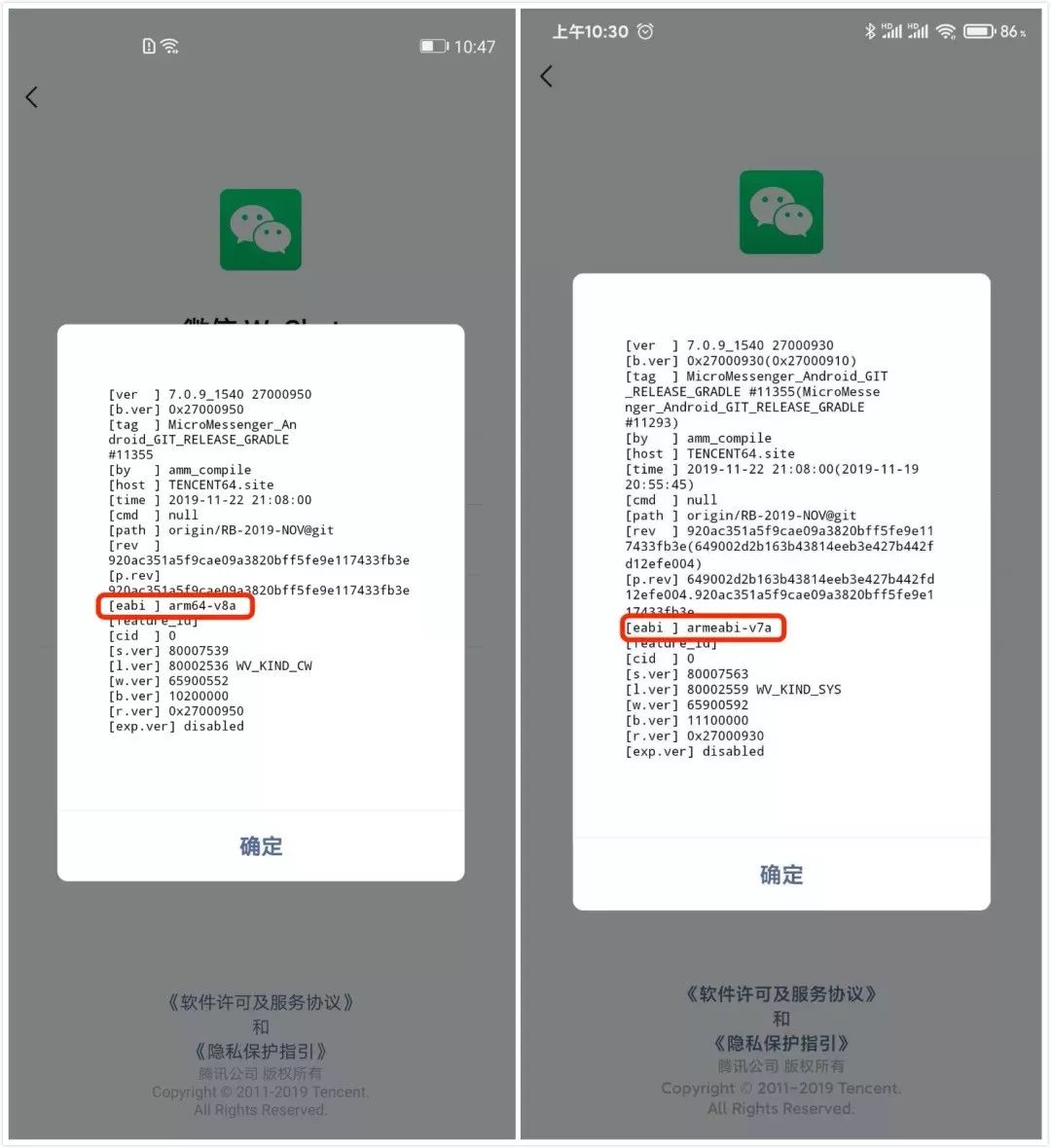
It can be said that the openness of Android has become a major limiting factor.Many people may wonder, is there really such a big difference between 64-bit and 32-bit?64-bit and 32-bit generally refer to the CPU’s ability to process data in either 32 bits or 64 bits at a time.As we know, various files and your frequent operations on the phone are represented and processed by numbers for the processor.The processor stores these numbers in binary form, allocating space for them in bits, represented by the binary states of 0 and 1.For example, 32 bits can represent 2 to the power of 32, which is 4294967296=4GB of memory, while 64 bits can represent 2 to the power of 64, theoretically supporting 16TB of memory.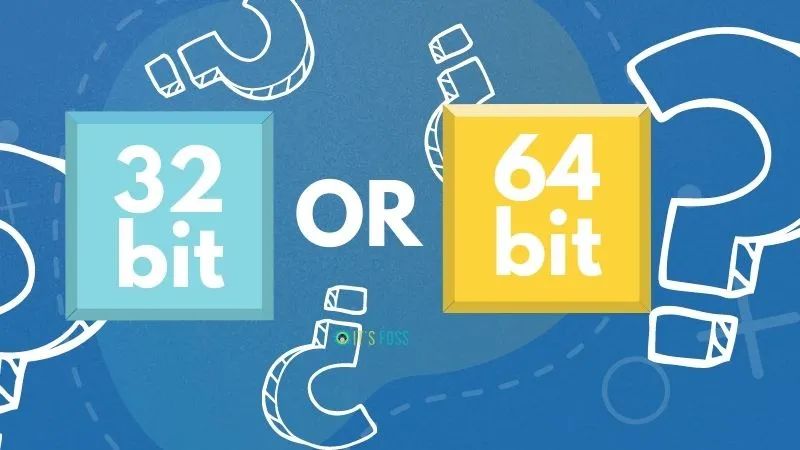 This number can be said to have basically no upper limit,but in 2022, Android phones have already increased their memory to 12GB or even higher, so the 4GB memory limit supported by 32 bits is no longer sufficient, making an upgrade a necessity.
This number can be said to have basically no upper limit,but in 2022, Android phones have already increased their memory to 12GB or even higher, so the 4GB memory limit supported by 32 bits is no longer sufficient, making an upgrade a necessity.
Taking the Snapdragon 8 Gen 1 and Dimensity 9000 from the Android camp as examples, both chips adopt the ARMv9 architecture, featuring three types of CPUs: Cortex-X2 super core, Cortex-A710 big core, and Cortex-A510 small core.
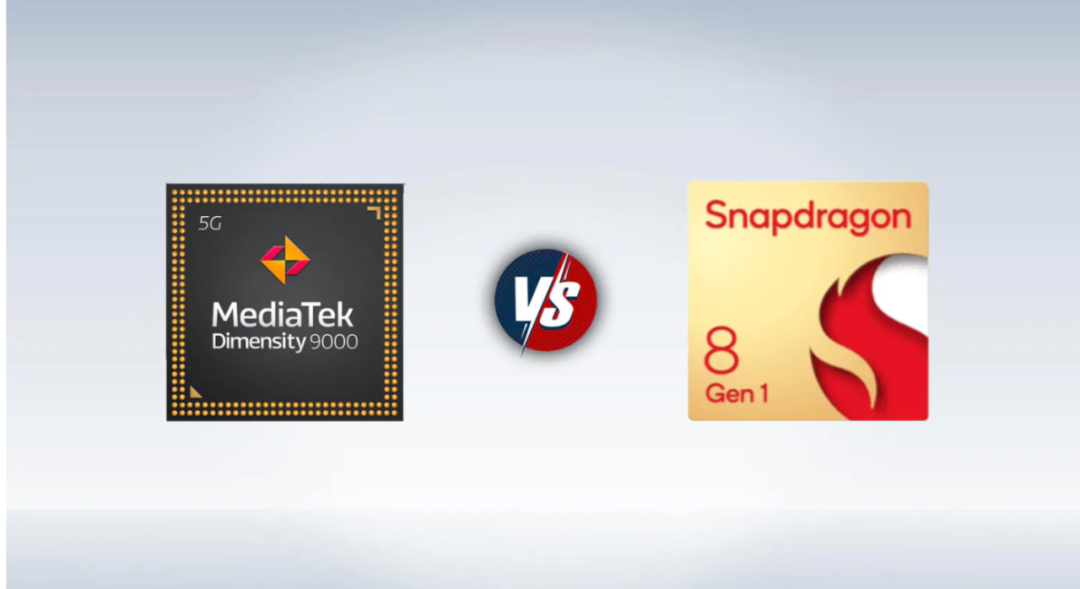
Only the Cortex-A710 is compatible with 32-bit applications, while the Cortex-X2 and Cortex-A510 only support 64-bit operating systems and applications.
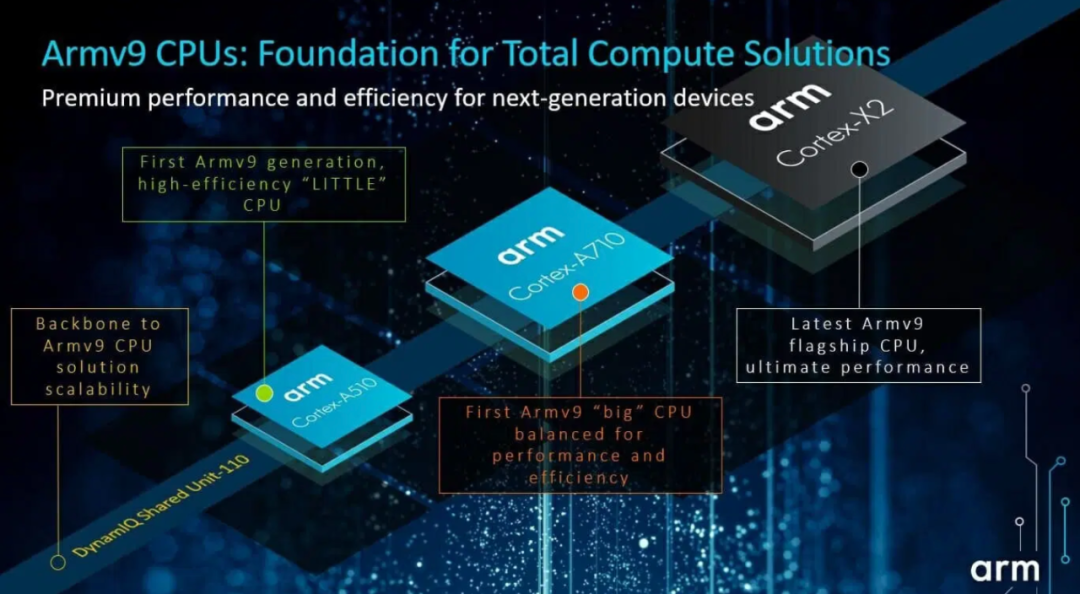
This means that when a phone runs a 32-bit application, it can only run on the Cortex-A710, which significantly reduces speed and efficiency, leading to what we commonly refer to as “lagging”.
For instance, the Dimensity 9000 running multiple 64-bit applications shows that the cold start speed of applications can improve by about 13%-60% compared to 32-bit.
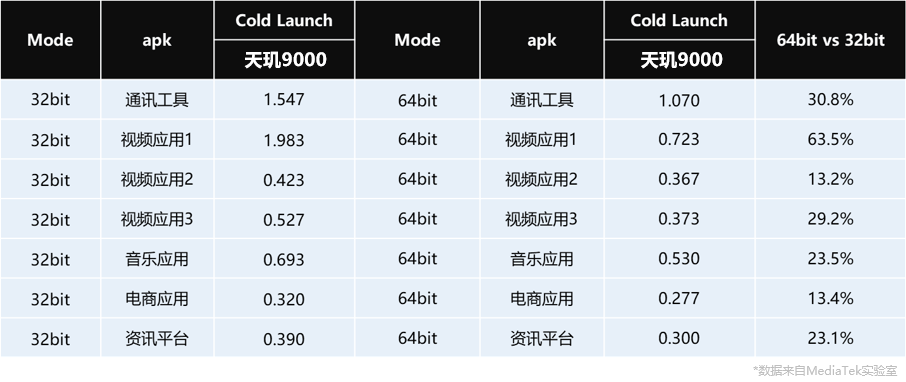
/Image source: MediaTek Labs
In mobile gaming, a comparative test using the Unity Engine “Armies” demo shows that running 64-bit applications can bring a 16% increase in frame rate compared to 32-bit.
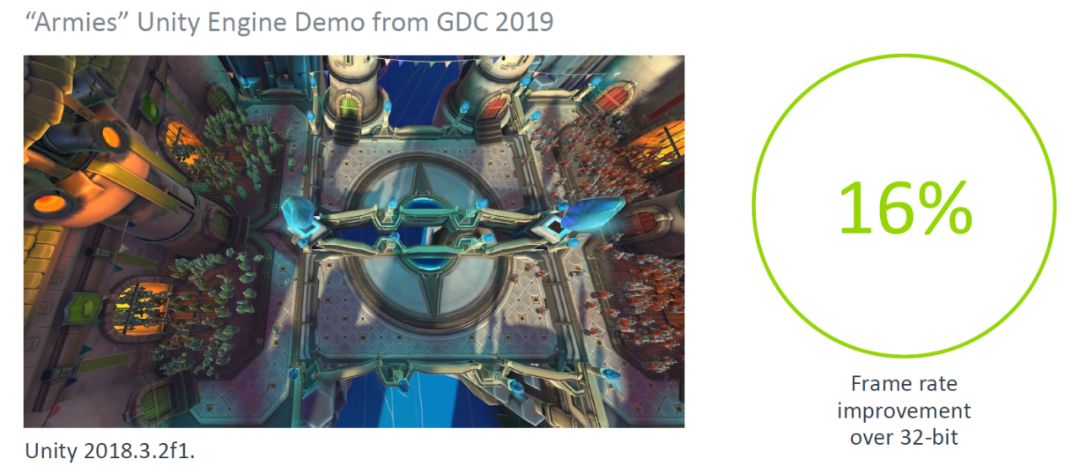
/Image source from the internet
In summary, the improvements are very significant.
However, it should be noted that a mobile phone is not a computer, and the memory requirements are limited. Therefore, the role of a 64-bit CPU is to enhance performance and response speed as long as the mobile memory meets usage needs.
In other words, even if the iPhone has always been 4GB/6GB, it will not affect operation, although the issue of background app killing still needs to be considered.For this reason, Apple clearly stated in 2017 with the A11 processor and iOS 11 that it would no longer support 32-bit applications.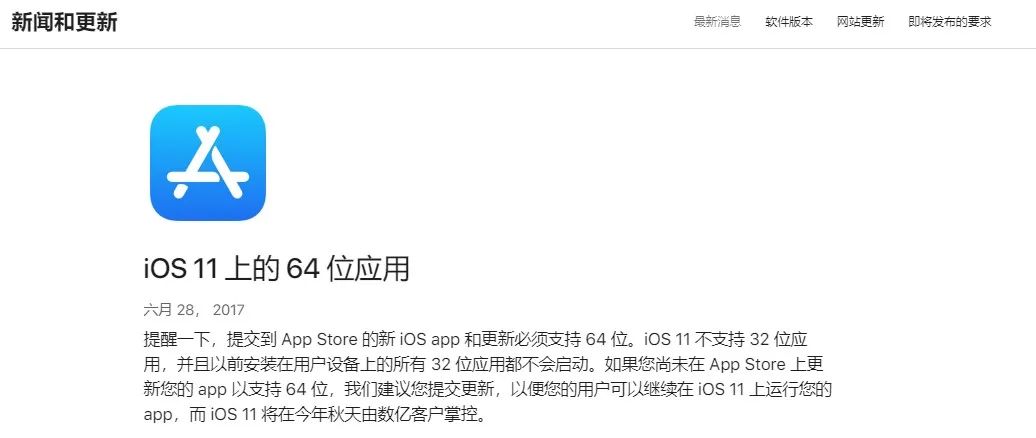 Android previously announced that starting from August 2019, all applications in Google Play must support 64-bit. From August 1, 2021, Google Play on 64-bit devices will no longer provide 32-bit versions of applications.
Android previously announced that starting from August 2019, all applications in Google Play must support 64-bit. From August 1, 2021, Google Play on 64-bit devices will no longer provide 32-bit versions of applications.
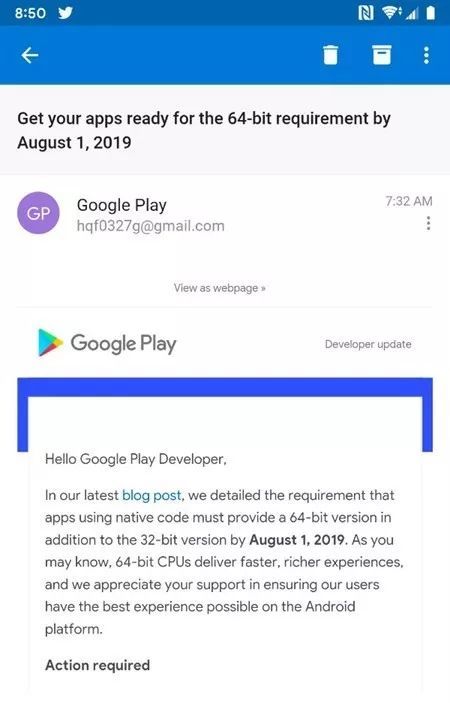
/Image source from the internetDomestic smartphone manufacturers are also responding positively, with the Mobile Intelligent Terminal Ecological Alliance announcing that starting from April 2022, new applications listed in the app stores of alliance members OPPO, vivo, and Xiaomi will not be allowed to be listed with only 32-bit application packages; a 64-bit version must be provided.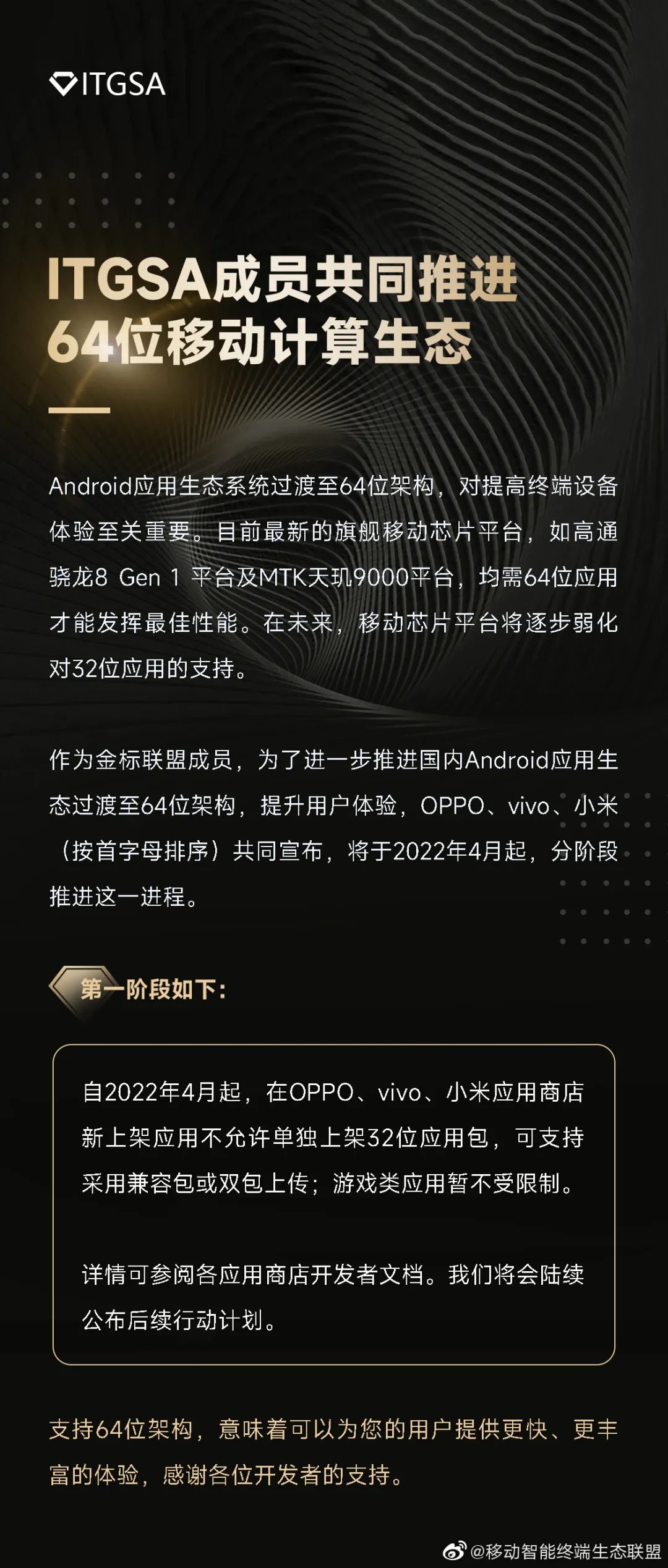
/Image source: Weibo @ Mobile Intelligent Terminal Ecological Alliance
Many people are curious if Android will be completely smooth starting this year?
In fact, the software ecosystems of various systems have been transitioning to 64-bit for many years, so there will not be a significant improvement in smoothness; it will still be the same…
However, ultimately, only 64-bit applications can fully leverage the performance of 64-bit devices, which is a combination of software and hardware. Adaptation is inevitable; it is just a matter of time.
Materials sourced from the internet, please delete if infringing
What will be the next leading technology for iPhone?👇